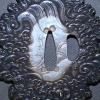-
Posts
761 -
Joined
-
Last visited
-
Days Won
5
Katsujinken last won the day on March 24 2019
Katsujinken had the most liked content!

Katsujinken replied to Katsujinken's topic in Swords and Edged Weapons

Katsujinken replied to Matsunoki's topic in Auctions and Online Sales or Sellers

Katsujinken replied to Matsunoki's topic in Auctions and Online Sales or Sellers

Katsujinken replied to Schneeds's topic in General Nihonto Related Discussion

Katsujinken replied to Schneeds's topic in General Nihonto Related Discussion

Katsujinken replied to Schneeds's topic in General Nihonto Related Discussion

